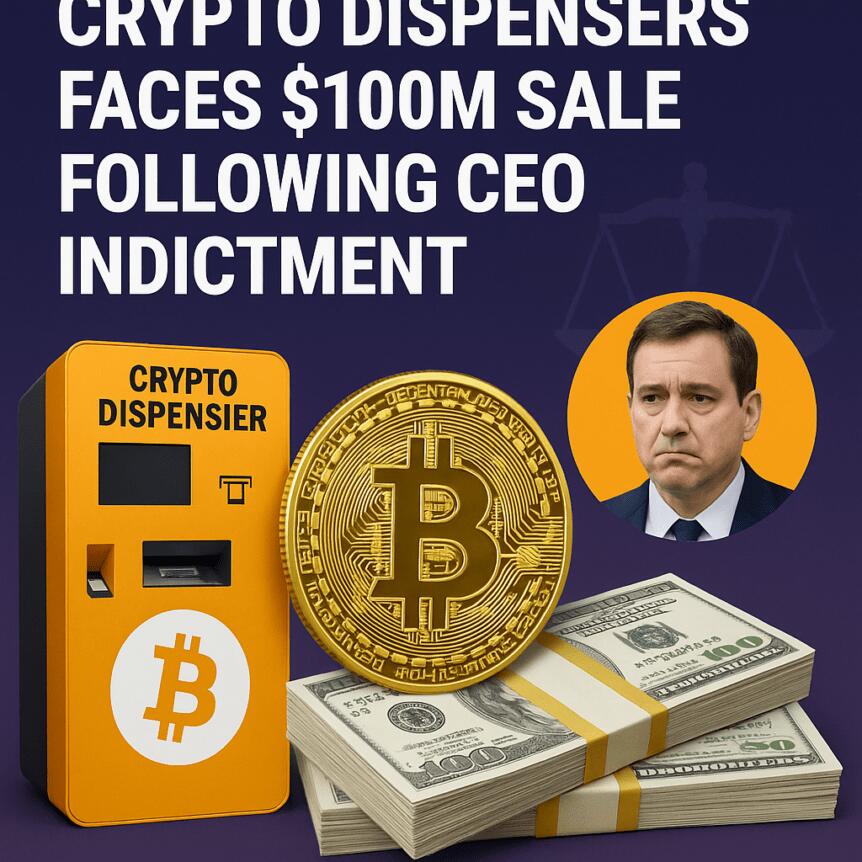CryptoCurrency
Crypto Dispensers Faces $100M Sale Following CEO Indictment

Crypto Dispensers Considers $100 Million Sale Amid Leadership Legal Challenges
Crypto Dispensers, a Chicago-based Bitcoin ATM operator, is exploring a potential sale valued at up to $100 million. The move comes amid serious legal issues facing its founder, Firas Isa, who has been indicted on federal charges of money laundering. The company’s strategic review, announced last week, aims to attract buyers and assess growth opportunities, reflecting a pivotal shift in its business trajectory.
In a statement, Crypto Dispensers revealed that it has engaged advisors to evaluate strategic options, including the possibility of a sale. The firm emphasized its transition from a physical ATM model to a software-based platform, initiated in 2020 to mitigate fraud risks, regulatory pressures, and compliance challenges. CEO Firas Isa described this phase as part of their next growth chapter, highlighting that “hardware showed us the ceiling. Software showed us the scale.”
The company noted that its future operations remain uncertain; it may continue as an independent entity depending on the results of the review. However, there is no guarantee that a transaction will materialize. The potential sale occurs amidst ongoing investigations into Isa, who was recently indicted by the US Department of Justice for allegedly facilitating a $10 million money laundering scheme through the company’s ATM network. Prosecutors allege that between 2018 and 2025, Isa knowingly processed proceeds from wire fraud and narcotics trafficking, converting illicit funds into cryptocurrency and layering transactions to hide their origin.
Both Isa and Crypto Dispensers have pleaded not guilty to a single conspiracy count, with a maximum sentence of 20 years in federal prison. If convicted, federal authorities could seize assets connected to the scheme. The circumstances underscore the increasing regulatory scrutiny in the crypto ATM space, especially as law enforcement intensifies efforts to combat illegal activities facilitated by such kiosks.
Amid these developments, US cities are ramping up restrictions on crypto ATMs. In Stillwater, Minnesota, the city recently prohibited crypto kiosks after residents reported significant scams, including fake PayPal overpayment schemes. Spokane, Washington, also enacted a ban citing the surge in scams linked to these machines, labeling them a “preferred tool for scammers.” Other jurisdictions are adopting restrictions instead of outright bans, such as Grosse Pointe Farms, Michigan, which imposed transaction limits to curb potential fraud.
As regulatory pressures mount and legal issues persist, the future of Crypto Dispensers remains uncertain, highlighting the risks and complexities within the rapidly evolving crypto ATM industry.










